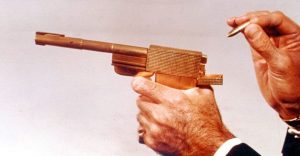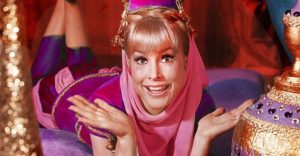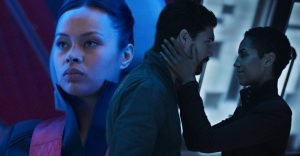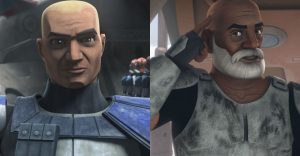10 Best Alfred Hitchcock Movie Posters, Ranked

Alfred Hitchcock is a distinct “auteur,” a director whose deft camerawork is omnipresent, creative and unique. He was also known for considerable innovation, even regarding special effects, such as the convincing plane crash in Foreign Correspondent. So it is especially memorable when Hitchcock’s advertising actually translated such inventive and visually defined movies.
Granted, like many movie posters of the time, the majority of them merely feature some star-studded kiss. To Catch a Thief was set in the naturally romantic France, colorful and vibrant throughout yet its poster is moody and suspenseful. But there are some that stand out in capturing the personality of the corresponding film with slick inspiration.
10 The Trouble With Harry (1955)

Hitchcock’s output in the fifties was absolutely remarkable, delivering many of his most well-known stories. So it’s intriguing that he decided to aim for an outright comedy. True, many of his films have elements of humor, and it wouldn’t be his last film of this kind.
However, there is something unusual and nuanced about this movie, as opposed to being riddled with slapstick or distinct zingers. The Trouble with Harry is all macabre, conceptual laughter, contrasted by a colorful setting. The poster also uses this visual tactic to clearly represent the premise, a joke in itself. However, it further uses the dichotomy between a typical passionate kiss and an old man dragging a dead body through the woods.
9 Frenzy (1972)

This funny, horrifying film makes it clear that many had grossly misrepresented Hitchcock’s supposedly waning abilities. As the times changed, Hitchcock took advantage of newfound freedoms. Filmed around his own backyard, this twisting thriller recaptures nearly every famous Hitchcock signature. It plays like a greatest hits album, but introduces hard-edged nudity and language.
The poster itself is something of a throwback to Vertigo, with its spiral motif. On a shadowy canvas, the screaming woman is in black-and-white, to reference Psycho. Similarly, the bright yellow text calls back to that hit’s poster. Although, it could also represent the film’s timely humor, which counters the bleak horrors. However, the red neckties are a dark, clever reference to the strangling murders.
8 Saboteur (1942)

This is another rollicking adventure of Hitchcock’s trademark protagonist — wrongfully accused and desperately seeking to clear their name. This time around, the hero’s best friend was actually killed by the saboteur’s fire at their aircraft factory. There are plenty of thrills, and the poster is correspondingly larger-than-life. Quite literally, the titular antagonist is a massive shadow, overlooking fiery destruction.
It’s all very catchy, and certainly as elaborate as the mystery. Unfortunately, the image is also rather messy. There’s plenty of red, reflecting Hitchcock’s theme of fire (even the antagonist is named “Frye”), but that is ultimately overwhelming. Still, the poster also strategically plays with angles to great effect. The title and the characters actually converge, akin to North by Northwest.
7 Shadow Of A Doubt (1943)

Even regarded by Hitchcock himself as a favorite, this milestone film is brimming with complicated themes about conformity, wealth, family and more. While it’s certainly a visually arresting movie, the screenplay is distinctly sharp. The true titular doubt is meant to be our own. There is a decisive intent to pull back the curtain on a great many things, with challenging convictions.
Consequently, the poster itself is seemingly ripped open. Inside, the cast struggles in warm reds — all except one man, who joins the oppressive blues that surround them. The moody image questions who the audience should trust, which very much reflects the atmosphere of the film.
6 North By Northwest (1959)

Possibly the most quintessential Hitchcock film of all time, this hilarious action-adventure is profoundly witty and exciting. It’s boisterous, winking, and romantic, but the actual thrills are still genuinely suspenseful. The title of the film itself should instantly imply that something is askew. And that is indeed the playful tone of the story, throughout.
Now, there are two popular posters for this film: the original and the re-release. But the former was created by famous graphic designer, Saul Bass. His poster is rather minimalist, and less indicative of the vibrant film ahead. However, it still cleverly toys with audience expectations. The layered boxes imply multiple levels of deceit, and their edges are clearly uneven. Bass even implies the hero will get shot.
5 Family Plot (1976)

In Hitchcock’s final film, small-time scammers accidentally cross paths with kidnappers in pursuit of ten thousand dollars. Expectations are especially crucial here, immediately following a widely regarded comeback film. Many audiences and critics would have counted on another genuine thriller instead of this wacky comedy.
Fortunately, the movie poster helps viewers brace for an about-face. It tells an entire story in a single image. The poster begins with an armed, mysterious blonde in shady attire, enveloping two people who run for their lives. Then, Hitchcock literally winks at you. The title is revealed, an outright pun with a double-meaning. The poster wields the same punchline the movie reinforces throughout.
4 The Birds (1963)

Possibly one of the most definitive images in all of cinema, let alone horror. The mysterious plot of aggressive bird attacks is blatantly displayed, a horrifying and brilliant concept. The mere premise is so robust, it requires very little to sell. But Hitchcock’s film scaled up the source material, and established engaging new characters in a fresh setting. The bird attacks coincide with emotionally resonant themes about psychologically caged people. Our protagonists are terrorized by their faults as much as the shadowy crows.
Here, the poster smartly lifts striking imagery from the film. But Hitchcock himself is a distinct selling point. His picture and promise surround the intriguing iconography, and after Psycho, few would need more.
3 Dial M For Murder (1954)

Another poster that is almost unfair in its superiority, because it borrows from a classic scene in the movie itself. Hitchcock’s undeniable eye for engaging imagery has always been impressive, and crafted one of cinema’s most iconic sequences in Dial M for Murder. The entire film is wrapped around the central murder of Grace Kelly’s character.
Everything leads up to the titular murder, which utterly transforms the other half of the story. The actual attack is proudly displayed here, surrounded by intense red and the hanging phone that was used for the strangling. The image is suggestive, smothering and terrifying. And one line of dialogue emerges from the phone — which helps describe the plot in a single picture.
2 Psycho (1969)

Saul Bass’ work is impeccable on what is perhaps Hitchcock’s most recognizable film, which even became a hit TV show.
The film was unusual in every way. Firstly, it deliberately utilized black-and-white for a gothic feel, immediately following Hitchcock’s most colorful, escapist film yet. Few would have expected anything gray anymore. Secondly, it is structurally bizarre, with two apparently disparate storylines. The first half is about stealing thousands of dollars, and the latter mainly follows a serial killer. Both films succeed, tied together by the famous shower murder.
Psycho is a bold movie about broken people, which also perfectly ushered in America’s turbulent ’60s. Saul Bass takes full advantage, splitting characters apart with odd angles. The image is heavily sexualized, and hides the true killer in some unimportant shadows, merely an unassuming face.
1 Vertigo (1958)

Widely regarded as one of the best films of all time, and likewise, this is possibly one of the most famous cinematic posters. Saul Bass’ consistent ability to visualize thematic and emotional content is uncanny. He literally represents the sensation of the titular condition, and the central figures bear his trademark crookedness. Respectively, one is shadowed while the other is empty. This is a very clever nod to the story’s themes, wherein the protagonist is haunted and Kim Novak is never what she seems. Together, they are entwined in one of Hitchcock’s most winding, surreal tales.
About The Author















